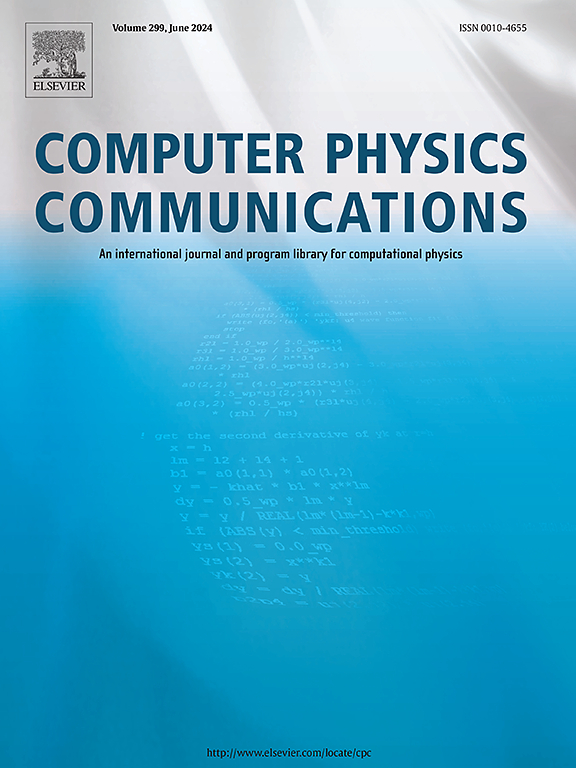两全其美:在转换率的机器学习模型中强制执行详细的平衡
IF 7.2
2区 物理与天体物理
Q1 COMPUTER SCIENCE, INTERDISCIPLINARY APPLICATIONS
引用次数: 0
摘要
材料微观结构的缓慢演化往往是决定材料性能的关键因素。当进化过程的单位步长较慢时,直接模拟方法(如分子动力学)变得令人禁止,而动力学蒙特卡罗(kMC)算法(其中系统的状态到状态进化用连续时间马尔可夫链表示)则经常依赖于有效地预测长期进化。然而,kMC模拟的准确性依赖于反应途径和相应动力学的完整和准确的知识。这一要求在复杂的系统中变得极其严格,如浓缩合金,在这些系统中,局部原子构型的天文数字使得所有可能的跃迁的先验制表不切实际。过渡动力学的机器学习模型已被用于缓解这一问题,使动力学参数的有效实时预测成为可能。虽然基于过渡态理论的传统KMC方法自然地产生完全符合详细平衡准则的可逆动力学,为平稳分布的性质提供了强有力的保证,但许多最近提出的基于ml的势垒预测方法没有提供这样的保证。在这项研究中,我们推导出了一些条件,在这些条件下,物理信息的机器学习架构通过构建精确地执行详细的平衡条件,即使依赖于围绕移动缺陷的局部环境的非广泛的状态描述。以浓缩合金中空位的扩散为例,我们表明这种机器学习架构在预测精度方面也表现出优异的性能,表明施加物理约束可以在不增加计算成本的情况下促进障碍的准确学习。本文章由计算机程序翻译,如有差异,请以英文原文为准。
Best of both worlds: Enforcing detailed balance in machine learning models of transition rates
The slow microstructural evolution of materials often plays a key role in determining material properties. When the unit steps of the evolution process are slow, direct simulation approaches such as molecular dynamics become prohibitive and Kinetic Monte-Carlo (kMC) algorithms, where the state-to-state evolution of the system is represented in terms of a continuous-time Markov chain, are instead frequently relied upon to efficiently predict long-time evolution. The accuracy of kMC simulations however relies on the complete and accurate knowledge of reaction pathways and corresponding kinetics. This requirement becomes extremely stringent in complex systems such as concentrated alloys where the astronomical number of local atomic configurations makes the a priori tabulation of all possible transitions impractical. Machine learning models of transition kinetics have been used to mitigate this problem by enabling the efficient on-the-fly prediction of kinetic parameters. While conventional KMC methods based on transition state theory naturally yield reversible dynamics that exactly obey the detailed balance criterion, providing strong guarantees on the properties of the stationary distribution, many recently-proposed ML-based approaches to barrier predictions provide no such guarantees. In this study, we derive conditions under which physics-informed ML architectures exactly enforce the detailed balance condition by construction, even when relying on non-extensive descriptions of states in terms of local environments around mobile defects. Using the diffusion of a vacancy in a concentrated alloy as an example, we show that such ML architectures also exhibit superior performance in terms of prediction accuracy, demonstrating that the imposition of physical constraints can facilitate the accurate learning of barriers at no increase in computational cost.
求助全文
通过发布文献求助,成功后即可免费获取论文全文。
去求助
来源期刊

Computer Physics Communications
物理-计算机:跨学科应用
CiteScore
12.10
自引率
3.20%
发文量
287
审稿时长
5.3 months
期刊介绍:
The focus of CPC is on contemporary computational methods and techniques and their implementation, the effectiveness of which will normally be evidenced by the author(s) within the context of a substantive problem in physics. Within this setting CPC publishes two types of paper.
Computer Programs in Physics (CPiP)
These papers describe significant computer programs to be archived in the CPC Program Library which is held in the Mendeley Data repository. The submitted software must be covered by an approved open source licence. Papers and associated computer programs that address a problem of contemporary interest in physics that cannot be solved by current software are particularly encouraged.
Computational Physics Papers (CP)
These are research papers in, but are not limited to, the following themes across computational physics and related disciplines.
mathematical and numerical methods and algorithms;
computational models including those associated with the design, control and analysis of experiments; and
algebraic computation.
Each will normally include software implementation and performance details. The software implementation should, ideally, be available via GitHub, Zenodo or an institutional repository.In addition, research papers on the impact of advanced computer architecture and special purpose computers on computing in the physical sciences and software topics related to, and of importance in, the physical sciences may be considered.
 求助内容:
求助内容: 应助结果提醒方式:
应助结果提醒方式:


